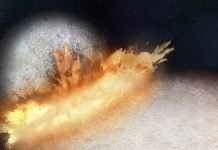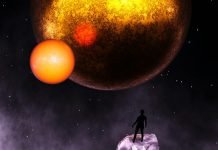
We find examples of fractals everywhere in nature.
Tree branches, snowflakes, river deltas, cloud formations, and more.
So it’s natural to ask the ultimate question: is the entire universe one giant fractal?
The answer is…no, but sorta yes.
Benoit Mandelbrot, who pretty much everyone agrees introduced the modern concept of fractals into the world (and even coined the term), was the first to wonder if our universe might be in the form of a fractal.
At the time, astronomers had just begun constructing extensive deep-space catalogs of galaxies, and were just beginning to piece together the large-scale structure of the universe.
Since fractals are everywhere, maybe everywhere is a fractal. Maybe when you zoom out and see a particular pattern of galaxies, you can zoom out even further and find the same pattern repeated. And so on and so on, all the way to infinity.
Alas, comprehensive galaxy surveys would reveal that our universe is not best described as a fractal.
There’s a limit, known as the homogeneity scale, where one patch of the universe looks pretty much like any other patch of the same scale. That scale is about 100 megaparsecs. Zoom out further, and you just see a bunch of the same patches side-by-side, with no larger pattern.
What’s more, there’s no simple fractal description of the pattern of galaxies on the way up to the homogeneity scale. While Mandelbrot’s idea was really cool, it just didn’t hold up to observational scrutiny.
But wait, there’s more.
At the largest scales the galaxies in our universe are arranged in a vast web-like pattern, known as (appropriately enough) the cosmic web. There are long thin filaments of galaxies, dense clusters, broad walls, and vast, empty regions called voids.
The voids aren’t 100% empty, however. Careful observations and detailed simulations have revealed that the cosmic voids contain a faint, thin version of the cosmic web. Dotting those effervescent filaments are dim, dwarf galaxies.
And inside the voids-within-a-void sit an even fainter version of the cosmic web.
The repitition doesn’t extend forever: once you get to the scale of individual galaxies everything breaks down, and once you get larger than a single cosmic void you start to reach the homoegenity scale.
But in between those extremes, between about 5 and 100 megaparsecs, the large-scale structure of the universe does exhibit some fractal-like properties.
There’s still no simple fractal description of the voids, but it is intriguing that while Mandelbrot’s idea didn’t apply to everything in the universe, it did apply to the regions with the most…nothing.
Written by Paul M. Sutter.




